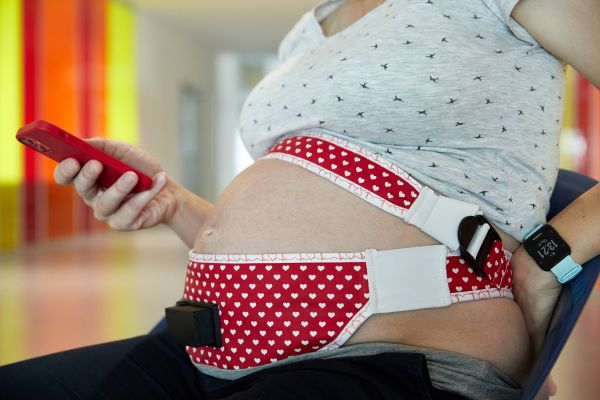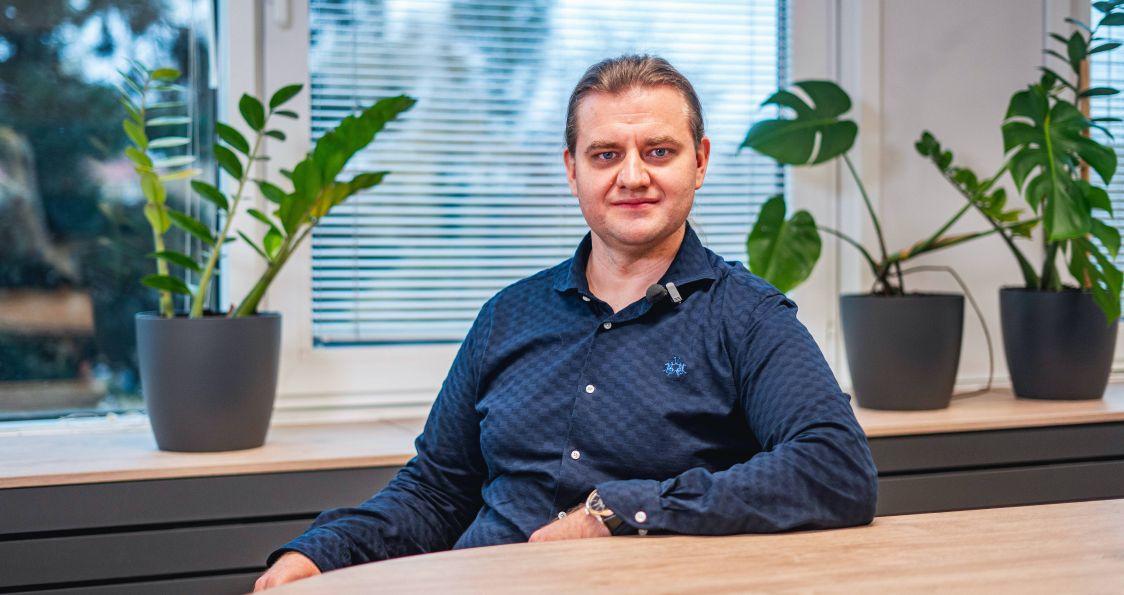It will allow faithful monitoring of both maternal and foetal heart activity. At home. Thanks to a unique technology from VSB – Technical University of Ostrava, a phantom simulating the foetal electrocardiogram, it will be possible to measure whether everything is developing properly from the 20th week of pregnancy.
The team led by Professor Radek Martinek from the Department of Cybernetics and Biomedical Engineering at the Faculty of Electrical Engineering and Computer Science, VSB – Technical University of Ostrava, has developed the Phantom Simulating the Foetal Electrocardiogram technology, which is used to model the activity of the foetal and maternal heart.
The patented phantom technology was a necessary intermediate step towards the development of a home ECG monitor for the unborn child. Today the team, together with a private investor, is working on a prototype that they will jointly put into practice.
The patented phantom simulating the foetal and maternal electrocardiogram technology allows for true modelling of the electrical activity of the maternal and foetal heart. It can thus simulate various physiological and pathological signals, different foetal positions in the uterus, different stages of pregnancy, etc. This unique technology has also enabled the development of a home ECG monitor for the unborn baby.
The technology developed by a research team led by Radek Martinek non-invasively monitors and evaluates foetal heart activity using a so-called foetal electrocardiogram (ECG), all in the comfort of home conditions. “We place a comfortable belt fitted with several measuring electrodes on the expectant mother’s abdomen and monitor the foetal heart activity. Measurements are taken from the 20th week of pregnancy when the foetus and its heart are sufficiently developed,” explains Radek Martinek.
The project is a big challenge for the scientists. “The technology measures the mother’s ECG at the same time as the foetus’ ECG because her heartbeat is many times stronger,” says the scientist. The signals of both mother and baby overlap in the time and frequency domain, so advanced filtering is required – the scientists are, therefore, using advanced signal processing methods.
Currently, gynaecologists monitor pregnant women using a similar examination called cardiotocography (CTG), which is also called “echoes” or “bands”. This also measures the baby’s heartbeat, but on the basis of ultrasound.
“Ultrasound works on the principle of action-reaction. A sound is sent out at a high frequency, whereupon you measure what comes back to you. But with ultrasound, energy is put into the woman’s body. Moreover, this examination must be carried out in a specialist’s office,” explains Radek Martinek.
The system developed by scientists from the Department of Cybernetics and Biomedical Engineering at the FEECS, VSB-TUO is completely passive because it only monitors what the monitored people produce. “Another advantage of our electrode belt is that no gel needs to be applied during the measurement, and it can be used repeatedly,” explains Radek Martinek. Unobstructed movement is also a considerable advantage of the device.
Martinek and his team consult with clinical practice to develop the device. “We have been cooperating for a long time, for example, with university hospitals in Ostrava and Brno. Cooperation with doctors is absolutely essential for us,” he smiles. The scientists are very pleased that everything they are researching at the Faculty of Electrical Engineering and Computer Science is taking on a tangible form and that the product will help expectant mothers.
A private investor has shown interest in the technology and has already purchased the licence from VSB – Technical University of Ostrava. It then launched a competition and, together with scientists, developed a pre-production prototype, which was completed at the end of 2020, Martinek adds. The project was also successful this year with the Czech Technology Agency.
“In the end, we want to create a product that is able to compete with those that are already on the market – they usually come from Asia and work on a different principle, usually ultrasound or phonocardiography, but in any case, it is more of a placebo effect,” reflects Professor Martinek.
Another expected outcome of this project is also a professional version of the patented phantom, which will be offered not only to technicians but also to clinicians. “The phantom will represent the torso of a pregnant woman, a kind of mannequin, with the possibility of connecting commonly used devices in hospitals. This can serve as a simulator for health workers, where they can practice all the monitoring methods without endangering the health of the baby or the mother. Technicians can test the accuracy of their devices or algorithms,” says Martinek.
The current project, which will run until 2024, is funded by the Technology Agency of the Czech Republic and three private companies.

“We are currently fine-tuning the final design and optimising the functions of the device, and we have started working with professional electronics developers, mechanical engineers, and a sewing workshop. They are all involved in the creation of our own electronics, electrodes, and wearable belts. The design is already in play here. It is a great experience for our team,” says Martinek.
Previously, they were forced to do everything themselves, so to speak, “by makeshift means” in the laboratories of the Department of Cybernetics and Biomedical Engineering, which are adapted for the development of hardware and software or for the production of prototypes using 3D printing, but for some areas, they are still not up to certain tasks. “For example, we had to buy a sewing machine for the lab and to ask colleagues from the Faculty of Mechanical Engineering to make the electrodes. Even so, our prototype did not look bad at all, and the private investor was very satisfied,” he adds with a smile.
Martinek also stresses that device development is not just about what you can see and what you can “touch”. “The key is the ‘guts’ of the product. And in our case, that is the software. This is also where we have started working with professionals from the field who focus on developing user apps for expectant mothers on Android and iOS platforms. Also with web developers, server experts and so on,” he explains.
The external companies involved in the development are already preparing the necessities related to marketing, such as the creation of a logo, e-shop, sales strategy, licensing, etc. “This is a far cry from what we normally do in the department. In fact, it is quite challenging to manage such a large project with so many external partners and subcontractors. However, I can speak for our entire team that it is an honour and great satisfaction that what we have been doing for a long time in our academic research is slowly being transferred into a real product and will not just remain in the form of crazy equations or scientific publications.”
The United States of America, where the product has the greatest potential, will be the entry market for sales.
Not only the Faculty of Electrical Engineering and Computer Science of VSB-TUO is working on the research, but also universities from all over the world – from the USA, Israel, China, or Poland. In the future, they have one more goal in common – a joint international project, such as HORIZON EUROPE.
For Martinek, this topic is a matter of the heart, which he has been working on since his doctoral thesis. “We manage to transfer into teaching everything we do in the project. We have introduced three new courses across the curriculum – in Bachelor’s, Master’s, and doctoral degree programmes,” he concludes.
